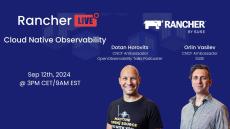- January 2025 (1)
- November 2024 (1)
- September 2024 (1)
- August 2024 (4)
- July 2024 (4)
- May 2024 (3)
- April 2024 (3)
- March 2024 (9)
- February 2024 (5)
- January 2024 (5)
- December 2023 (10)
- November 2023 (2)
- September 2023 (4)
- August 2023 (4)
- July 2023 (3)
- June 2023 (5)
- May 2023 (4)
- April 2023 (13)
- March 2023 (4)
- February 2023 (4)
- January 2023 (6)
- December 2022 (8)
- November 2022 (6)
- October 2022 (10)
- September 2022 (3)
- August 2022 (10)
- July 2022 (6)
- June 2022 (5)
- May 2022 (20)
- April 2022 (6)
- March 2022 (11)
- February 2022 (7)
- January 2022 (9)
- December 2021 (3)
- November 2021 (5)
- October 2021 (9)
- September 2021 (6)
- August 2021 (6)
- July 2021 (4)
- June 2021 (4)
- May 2021 (4)
- April 2021 (3)
- March 2021 (8)
- February 2021 (4)
- January 2021 (1)
- December 2020 (17)
- November 2020 (10)
- October 2020 (9)
- September 2020 (10)
- August 2020 (15)
- July 2020 (19)
- June 2020 (17)
- May 2020 (17)
- April 2020 (21)
- March 2020 (16)
- February 2020 (13)
- January 2020 (8)
- December 2019 (7)
- November 2019 (7)
- October 2019 (13)
- September 2019 (8)
- August 2019 (11)
- July 2019 (11)
- June 2019 (8)
- May 2019 (14)
- April 2019 (11)
- March 2019 (14)
- February 2019 (16)
- January 2019 (8)
- December 2018 (8)
- November 2018 (5)
- October 2018 (5)
- September 2018 (1)
- August 2018 (1)
- June 2018 (2)
- May 2018 (2)
- April 2018 (1)
Rancher is a complete software stack for teams adopting containers. It addresses the operational and security challenges of managing multiple Kubernetes clusters, while providing DevOps teams with integrated tools for running containerized workloads.
At Rancher Labs we love containers, and love the experience they bring to developers. We love their portability, ease-of-use, and rich ecosystem support. We believe that Kubernetes is on the verge of turning from developer’s favorite tool to the de-facto large-scale production platform. So we have built tools that help organizations run their applications and services on herds of containers that can roam across Kubernetes clusters and clouds.
One Platform for Everyone who uses Kubernetes:
- Multi-Cluster Management: Rancher was built to manage Kubernetes everywhere it runs. It can easily deploy new clusters from scratch, launch EKS, GKE and AKS clusters, or even import existing Kubernetes clusters.
- Unified Operations: With Rancher, ops teams have the same control and management tools across dev, staging and production Kubernetes clusters.
- Centralized Policy Management: Ensure container security is implemented consistently with centralized security policies that can be applied across every Kubernetes cluster managed by Rancher.
- Authentication and RBAC: Rancher connects with Active Directory, LDAP and other authentication systems to ensure users only have the appropriate access to Kubernetes.
- Intuitive Interface: Rancher gives users native access to the Kubernetes API and CLI, but also provides an intuitive UI for managing pods, ingress policies, storage, secrets and service discovery.
- Integrated Tooling: DevOps teams can connect Rancher with existing tools, or choose to use integrated deployments of monitoring, logging, alerting and CI/CD.
Manage Kubernetes Everywhere with Rancher.

















